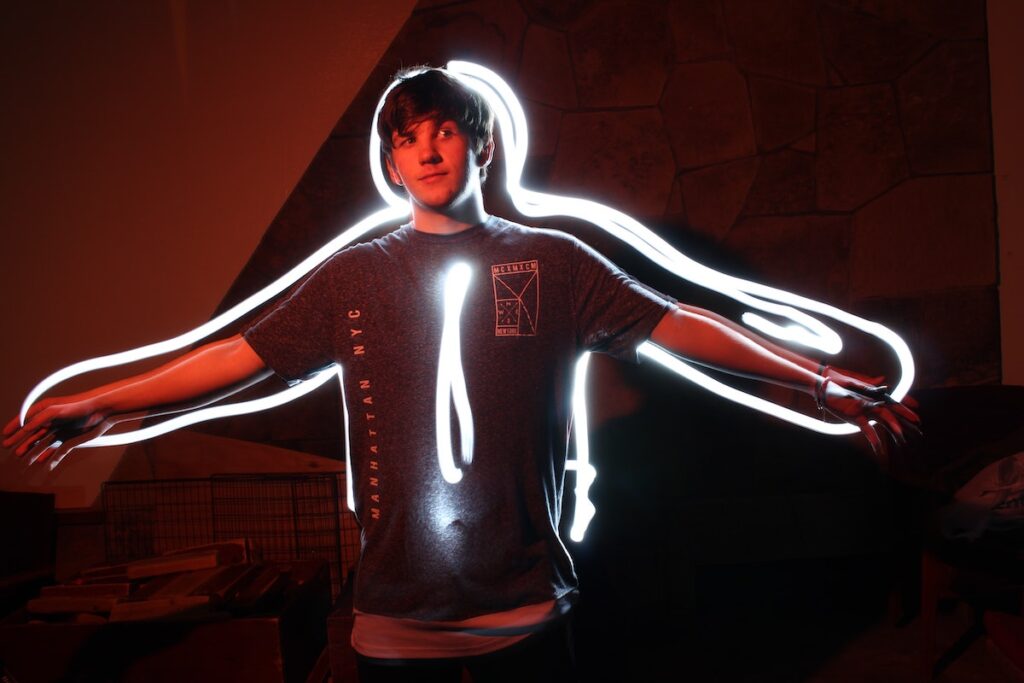
First episode psychosis (FEP) is a common, but often amorphous clinical presentation that encompasses significant diagnostic heterogeneity. Perhaps unsurprisingly then, there has been a dearth of high quality randomised controlled trials (RCTs) to inform evidence-based interventions for FEP.
Historically, the bulk of clinical trials in FEP have involved patients with first-episode schizophrenia, schizophreniform disorder, and schizoaffective disorder treated with antipsychotic medication (APM), based on the premise that non-antipsychotic treatment would be unethical in this population. As a result, such trials have typically involved comparisons between different APMs, with no placebo-controlled trials performed to date (Zhu et al., 2017). In support of this cautious approach, a recent meta-analysis of 10 RCTs comparing maintenance APM vs. APM discontinuation in patients with remitted FEP found an advantage for APM continuation in preventing relapse (Kishi et al., 2018). Another RCT in first-episode schizophrenia found that treatment with long-acting injectable APM was associated with a significantly reduced risk of relapse or psychotic exacerbation compared to oral APM (Subotnik et al., 2015).
Over the past decade or so, clinical trials have increasingly examined different psychosocial approaches to treating FEP, but have involved subjects being treated with APM (Gleeson et al., 2013; Nishida et al. 2018). As such research expands to include greater diagnostic diversity within FEP beyond schizophrenia, a gap exists in our understanding of how essential APM is for treatment at the “soft” end of the psychosis spectrum.
Two recently published RCTs (Francey et al., 2020; Morrison et al., 2020), both comparing APM to cognitive behavioural therapy (CBT) in FEP, have now helped to fill that gap. The results have already been used to argue against the use of APM in this population in favour of CBT, adding fuel to ongoing debates about psychiatric vs. psychological interventions for psychosis. However, a closer look at these studies highlights many still unanswered questions about the optimal treatment of FEP.

First-episode psychosis (FEP) encompasses a range of diagnoses across the psychosis spectrum. Until now, no controlled clinical trials involving non-antipsychotic interventions have been done to clarify whether antipsychotic medications are necessary at the softer end of the spectrum.
Methods
The study by Francey et al. was done by researchers affiliated with the Orygen Specialist Program in Australia who have published extensively on the treatment of FEP and “at risk mental states.” The RCT enrolled 90 participants aged 15-25 who presented to the Early Psychosis and Intervention Center (EPPIC) in Melbourne and were diagnosed with a DSM-IV psychotic disorder including schizophrenia, schizophreniform disorder, delusional disorder, brief psychotic disorder, major depression with psychotic features, substance-induced psychosis, or psychosis not otherwise specified (NOS). Subjects were randomised to either APM treatment (consisting of either risperidone or paliperidone at starting doses of 1 mg/day and 3 mg/day respectively) or placebo, with all subjects receiving cognitive behavioural case management (CBCM) over the course of the primary 6-month follow-up period. If participants discontinued medication or placebo, they were subsequently followed and treated per EPPIC guidelines with CBCM and APM at the discretion of clinicians. The main outcome of this “non-inferiority” study was level of functioning as measured by the Social and Occupational Functioning Scale (SOFAS). Study participants, treating clinicians, and researchers were all blind to treatment status.
The study by Morrison and colleagues was performed at UK National Health Service Trust sites by researchers that have published several previous “feasibility” studies of CBT for “schizophrenia spectrum disorders” (Morrison et al., 2014; Morrison et al., 2018). Help-seeking 14-18 year olds with FEP (based on chart diagnosis) were randomised to 1 of 3 treatment arms: 1) clinician choice APM flexibly-dosed per NICE CG155 guidelines, 2) CBT with optional family intervention and 3) both APM and CBT. Follow-up was conducted over a primary endpoint period of 6-months within a feasibility design intended to assess recruitability, retention, and treatment acceptability with a proposed primary efficacy outcome of total score on the Positive and Negative Syndrome Scale (PANSS). Only raters were blind to treatment status.
Results
In the study by Francey et al., modest improvements in total SOFAS score were observed (scores increased from about 54 to 62 on a scale that ranges from 0-100) without any significant difference between the APM and CBCM treatment conditions. Change scores on secondary outcome measures of psychiatric symptoms were likewise not significantly different between treatment groups. Treatment with APM was therefore found to be non-inferior to treatment with CBCM at the 6-month endpoint, with sustained improvements (but not statistical non-inferiority) at 12- and 24-month follow-up.
Morrison et al. reported sub-optimal study recruitment (68% of their target goal), but adequate retention and treatment adherence of participants over 6 months, suggesting reasonable feasibility and safety of comparing APM to psychotherapy in FEP within a clinical trial. In terms of PANSS scores, comparable improvements were observed across all 3 treatment conditions at 6 months as well as with observation extended to 12 months.

Two new studies support the feasibility and safety of studying non-antipsychotic treatment within randomised controlled trials for first episode psychosis.
Conclusions
These new studies highlight the feasibility of interventional RCTs without an active APM treatment arm in FEP. Taken at face value, they both suggest that APM might not offer a clear advantage over psychotherapeutic interventions in this population. However, some key clinical questions about the optimal treatment of FEP remain unanswered despite these RCTs.

Preliminary results suggest that antipsychotic medication might not offer an advantage over psychotherapy in broadly-defined first episode psychosis, but more research is needed to clarify details.
Strengths and limitations
The new studies by Francey et al. and Morrison et al. (the first ever RCTs involving a non-antipsychotic treatment arm) are welcome additions to the literature on the treatment of first episode psychosis FEP. However, before we conclude that antipsychotic medication (APM) offers no advantage over CBT in this population, a closer examination of the studies’ methodology and outcomes is warranted in order to translate the results to clinical practice and guide future research.
Diagnosis: Psychosis NOS vs. Schizophrenia
First-episode psychosis isn’t the same as first-episode schizophrenia. In these two trials, FEP included a much wider range of conditions within the psychosis spectrum. In the study by Francey et al., 40% of the sample had schizophrenia, schizophreniform disorder, or delusional disorder whereas the majority had either major depression with psychosis (20%), substance-induced psychosis (15%), or psychosis not otherwise specified (NOS) (25%). In Morrison et al.’s study, only 67% had a psychotic disorder and all but one of those were diagnosed with “unspecified non-organic psychosis.”
Although substance-induced psychosis and attenuated psychotic symptoms are known risk factors for progression to schizophrenia (Murrie et al., 2020), it may very well be that APM is unnecessary for patients on the “soft” end of the psychosis spectrum until such transition occurs. Previous anecdotal reports and controlled trials have documented the efficacy of non-antipsychotic medications for monosymptomatic voice-hearing or attenuated psychosis within “at risk mental states” (Pierre 2010; Cornblatt et al., 2002; Amminger et al., 2010). However, such preliminary findings in psychosis NOS should not be extended to first-episode psychotic disorders such as schizophrenia where the evidence for the effectiveness of APM is more robust. In order to further elucidate the optimal management of brief, attenuated symptoms experienced by those with psychosis NOS, future RCTs in FEP should consider excluding those with first-episode schizophrenia or schizoaffective disorder, which requires 6 months of continuous psychotic symptoms for diagnosis.
Antipsychotic dosing and homeopathy
Although it might be tempting to dismiss the necessity of APM in FEP based on these two new studies, further research is necessary to clarify whether their findings reflect the nonsuperiority of APM relative to CBT or the nonsuperiority of inadequate APM dosing. While clinical practice guidelines recommend lower doses of APM for first episode schizophrenia (Barnes et al., 2019), the evidence to support such recommendations is meagre in the absence of dose-finding RCTs in FEP. In any case, the dosing of APM in Francey et al. and Morrison et al. was even lower than those used in previous trials in first-episode psychosis (Zhu et al. 2017) and those within treatment guidelines for FEP that recommend dosing of risperidone in the 2-4 mg/day range (Barnes et al., 2019). Notably, risperidone 2 mg/day is not an effective dose in chronic schizophrenia (Marder et al. 1994).
In Francey et al.’s placebo-controlled trial, more than 80% of subjects receiving antipsychotic medication were dosed at < 2 mg/day risperidone equivalents. Among those initially assigned to placebo, 46% discontinued treatment and ended up on antipsychotic medication with half the mean cumulative dosing compared to the medication group, amounting to a study comparing low-dose APM to very low-dose APM. In Morrison et al.’s RCT, flexible clinical dosing resulted in more robust average doses across different APMs, but the mean dose of risperidone was still only 2 mg/day.
With such low APM dosing, it may be that the nonsuperiority of APM in these new RCTs should be interpreted as more of an indictment of homeopathic dosing than APM treatment per se. Perhaps the common clinical practice of treating subsyndromal psychosis in the absence of diagnostic clarity with low-dose APM is predicated on a myth that deserves to be put to rest. Instead, what needs to be elucidated more clearly in future research is when to treat with full doses of APM and when to defer exposure altogether.
Optimal psychosocial intervention?
The possibility that psychosocial interventions like CBT might be as effective as APM in FEP is tantalising; suggesting that some patients might be adequately helped without risking exposure to medication side effects. However, despite these two studies, it remains to be seen what psychosocial interventions might be optimal for managing syndromes across the psychotic spectrum.
In Francey et al.’s study, cognitive behavioural case management (CBCM) was provided as part of both treatment conditions, though nearly half of placebo subjects ended up on APM, and a substantial proportion of both APM- and placebo-treated subjects were also taking antidepressants (42-56%) and benzodiazepines (20-22%). These study design issues limit the ability to draw causal conclusions about clinical improvements being attributable to CBCM. In the absence of a placebo psychotherapy condition, the same can be said of Morrison et al.’s study (Jauhar 2020). It is possible that that the apparent efficacy of both CBT and medications in these trials might reflect the nonspecific benefits of supportive care.
With recent evidence tempering enthusiasm for CBT as a non-antipsychotic alternative for the treatment of schizophrenia (Jauhar et al., 2014; Laws et al., 2018), claims that the findings of Francey et al. and Morrison et al. constitute evidence that CBT without antipsychotic treatment is effective for FEP are at best premature. Perhaps the different psychotic and non-psychotic syndromes that are often swept under the rug of psychosis NOS would optimally benefit from more targeted psychosocial interventions (e.g. relapse prevention for substance-induced psychosis and primary prevention of adolescent cannabis use) and pharmacotherapies (e.g. antidepressants or anxiolytics). It’s also possible that many sub-syndromal symptoms at the soft end of the psychosis spectrum might resolve with supportive monitoring or without any intervention at all.

The apparent non-inferiority of antipsychotic medication and CBT in first episode psychosis could be explained by a sample population at the soft end of the psychotic spectrum as well as inadequate antipsychotic dosing.
Implications for practice
First-episode psychosis is a broad clinical entity that includes not only psychotic disorders such as schizophrenia, schizophreniform disorder, schizoaffective disorder, and delusional disorder, but also non-psychotic disorders such as depression, post-traumatic stress-disorder, and psychotic symptoms in the absence of any mental illness (Pierre 2010; Waters et al., 2018). While the evidence for the use of antipsychotic medication (APM) for first-episode psychosis is robust, these new studies validate doubts about whether APM is necessary at the softer end of the FEP spectrum. Further research examining the efficacy of specific pharmacologic and psychotherapeutic interventions (with appropriate placebo controls) for more narrowly-defined syndromes within the psychotic spectrum is a necessity in order to disentangle the heterogeneity of FEP and optimise its evidence-based management.

Concluding that antipsychotic medication should be avoided in favour of CBT for first episode psychosis (FEP) is premature. More research is needed to clarify whether those on the softer-end of FEP spectrum might benefit from more robust antipsychotic dosing, other psychosocial interventions besides CBT, or supportive monitoring alone.
Statement of interests
None.
Links
Primary papers
Francey SM, O’Donoghue B, Nelson B, Graham J, Baldwin L, Yuen HP, Kerr MJ, Ratheesh A, Allott K, Alvarez-Jimenez M, Fornito A, Harrigan S, Thompson AD, Wood S, Berk M, & McGorry PD (2020). Psychosocial intervention with our without antipsychotic medication for first-episode psychosis: A randomized noninferiority clinical trial. Schizophr Bull Open; 1:sgaa015.
Morrison AP, Pyle M, Maughan D, Johns L, Freeman D, Broome MR, Husain N, Fowler D, Hudson J, MacLennan G, Norrie J, Shiers D, Hollis C, & James A, on behalf of the MAPS group (2020). Antipsychotic medication versus psychological intervention versus a combination of both in adolescents with first-episode psychosis (MAPS): a multicenter, three-arm, randomized controlled pilot and feasibility study. Lancet Psychiatry; July 7, 2020.
Other references
Amminger GP, Schäfer MR, Papageorgiou K, Klier CM, Cotton SM, Harrigan SM, Mackinnon A, McGorry PD, & Berger GE (2010). Longchain omega-3 fatty acids for indicated prevention of psychotic disorders: a randomized, placebo- controlled trial. Archives of General Psychiatry, 67(2):146–54.
Barnes TRE, Drake R, Paton C, Cooper SJ, Deakin B, Ferrier IN, Gregory CJ, Haddad PM, Howes OD, Jones I, Joyce EM, Lewis S, Lingford-Hughes A, MacCabe JH, Owens DC, Patel MX, Sinclair JMA, Stone JM, Talbot PS, Upthegrove R, Wieck A, & Yung AR (2019). Evidence-based guidelines for the pharmacologic treatment of schizophrenia. Journal of Psychopharmacology, 34(1):3-78.
Cornblatt BA (2002). The New York high risk project to the Hillside recognition and prevention (RAP) program. American Journal of Medical Genetics, 114(8):956–66.
Gleeson JFM, Cotton SM, Alvarez-Jimenez M, Wade D, Gee D, Crisp K, Pearce T, Spiliotacopoulos D, Newman B, & McGorry PD (2013). A randomized controlled trial of relapse prevention therapy for first-episode psychosis patients: outcome at 30-month follow-up. Schizophrenia Bulletin, 39(2):436-448.
Jauhar S (2020). Psychosocial interventions versus antipsychotics for early-onset psychosis: can we fill the evidence gap? Lancet Psychiatry; July 7, 2020.
Jauhar S, McKenna PJ, Radua J, Fung E, Salvador R, & Laws KR (2014). Cognitive-behavioural therapy for the symptoms of schizophrenia-systematic review and meta-analysis with examination of potential bias. British Journal of Psychiatry, 204(1):20-29.
Kishi T, Ikuta T, Matsui Y, Inada K, Matsuda Y, Mishima K, & Iwata N (2018). Effect of discontinuation v. maintenance of antipsychotic medication on relapse rates in patients with remitted/stable first-episode psychosis: a meta-analysis. Psychological Medicine, 49(5):772-779.
Laws KR, Darlington N, Kondel TK, McKenna PJ, & Jauhar S (2018). Cognitive behavioural therapy for schizophrenia – outcomes for functioning, distress and quality of life: a meta-analysis. BMC Psychology, 6:32.
Marder SR, Meibach RC (1994). Risperidone in the treatment of schizophrenia. American Journal of Psychiatry, 151(6):825-35.
Morrison AP, Turkington D, Pyle M, Spencer H, Brabban A, Dunn G, Christodoulides T, Dudley R, Chapman N, Callcott P, Grace T, Lumley V, Drage L, Tully S, Irving K, Cummings A, Bryne R, Davies LM, & Hutton P (2014). Cognitive therapy for people with schizophrenia spectrum disorders not taking antipsychotic drugs: a single-blind randomised controlled trial. Lancet, 383(9926):1395-1403.
Morrison AP, Law H, Carter L, Sellers R, Emsley R, Pyle M, French P, Shiers D, Yung AR, Murphy EK, Holden N, Steele A, Bowe SE, Palmer-Claus J, Brooks V, Byrne R, Davies L, & Haddad PM (2018). Antipsychotic drugs versus cognitive behavioural therapy versust a combination of both in people with psychosis: a randomised controlled pilot and feasibility study. Lancet Psychiatry; 5(5):411-423.
Murrie B, Lappin J, Large M, & Sara G (2020). Transition of substance-induced, brief, and atypical psychoses to schizophrenia: A systematic review and meta-analysis. Schizophrenia Bulletin, 46(3):505-516.
Nishida A, Ando S, Yamasaki S, Koike S, Ichihashi K, Miyakoshi Y, Makekawa S, Nakamura T, Natsubori T, Ichikawa E, Ishigame H, Sato K, Matsunaga A, Smith J, French P, Harima H, Kishi Y, Fujita I, Kasai K, & Okazaki Y (2018). A randomized controlled trial of comprehensive early intervention care in patients with first-episode psychosis in Japan: 1.5-year outcomes from the J-CAP study. Journal of Psychiatric Research, 102:136-141.
Pierre JM (2010). Nonantipsychotic therapy for monosymptomatic auditory hallucinations. Biol Psychiatry, 68(7):e33-4.
Pierre JM (2010). Hallucinations in nonpsychotic disorders: toward a differential diagnosis of “hearing voices.” Harvard Review of Psychiatry, 18(1):22-35.
Subotnik K, Casaus LR, Ventura J, Luo JS, Helleman GS, Gretchen-Doorly D, Marder S, & Nuechtherlein KH (2015). Long-acting injectable risperidone for relapse prevention and control of breakthrough symptoms after a recent first episode of schizophrenia: a randomized clinical trial. JAMA Psychiatry, 72(8):822-829.
Waters F, Blom JD, Jardri R, & Hugdahl K (2018). Auditory hallucinations, not necessarily a hallmark of psychotic disorder. Psychological Medicine, 48(4):529-536.
Zhu Y, Krause M, Huhn M, Rothe P, Schneider-Thoma J, Chaimani A, Li C, Davis JM, & Leucht S (2017). Antipsychotic drugs for the acute treatment of patients with a first episode of schizophrenia: a systematic review with pairwise and network analysis. Lancet Psychiatry, 4(9):694-705.
Photo credits
Photo by Daniele Levis Pelusi on Unsplash
Photo by Jordan McDonald on Unsplash
